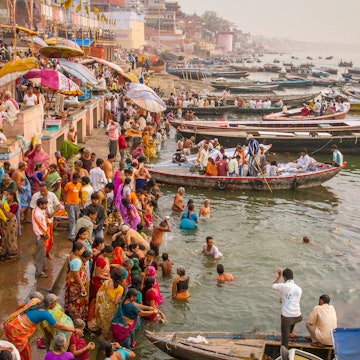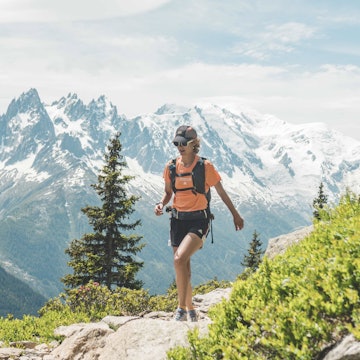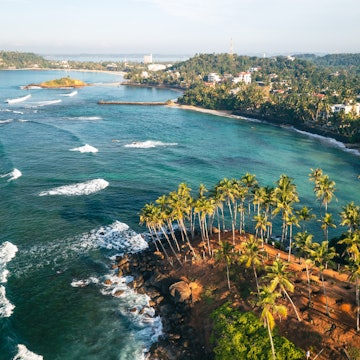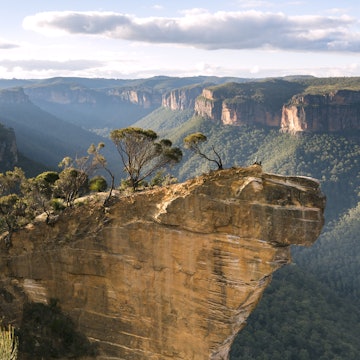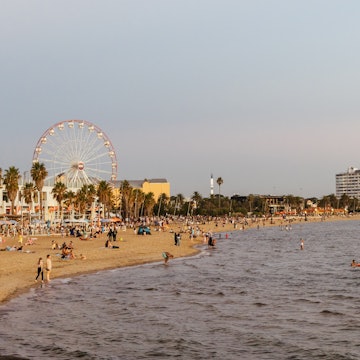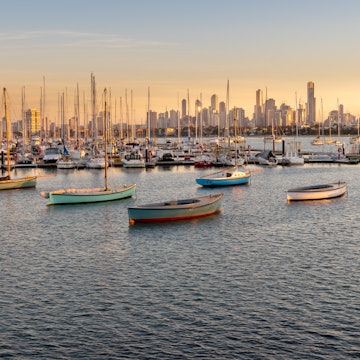

An airboat crosses the “River of Grass” at Everglades National Park, Florida. Mia2you/Shutterstock
To call Everglades National Park “just a swamp” is to call the Grand Canyon “a big ditch.” Stretching across 1.5 million acres of South Florida wilderness, this UNESCO World Heritage Site and International Biosphere Reserve is the largest tropical wetland in the USA – and one of the most ecologically rich places on planet Earth.
It’s also the only place on the planet where American alligators and crocodiles coexist. Throw in manatees, endangered Florida panthers, spoonbills and hundreds of other species, and you’ve got an outdoors lover’s fantasyland, whether you prefer to encounter it on a serene kayak ride or in a fast-moving airboat. From mangrove estuaries to sawgrass sloughs, the Everglades is where water flows slowly, the skies sprawl endlessly and nature gets to run the show. Whether you're taking a day trip from Miami or planning a multi-day camping odyssey, here’s how to navigate this iconic wilderness for the very first time.
Before visiting any US national park, visitors should be aware that staffing cuts in the National Park Service (NPS) are having an impact on the amenities available. Stay prepared with this guide.

When should I go to Everglades National Park?
Dry season, which runs from November through April, is the best time to visit the Everglades – and not just because the mosquitoes are taking a break. This is when wildlife is most active, the weather is (comparatively) pleasantly cool and less humid, and ranger programs and tours are in full swing.
Expect bigger crowds during the winter holidays and spring break, especially around the Shark Valley and Royal Palm areas. If you’re okay with heat, humidity and spontaneous thunderstorms, the summer wet season (May through October) offers a quieter, more solitary experience – but also more bugs. And yes, this is also hurricane season, so check forecasts before you go.

How much time should I spend in Everglades National Park?
A full day will give you enough time to get a taste of the park near one entrance area – say, Shark Valley for a tram ride and bike loop, or Flamingo for a backcountry boat tour. Ideally, you’d give yourself at least two to three days to explore the different ecosystems, each with its own mood and adventure.
A four-day itinerary might include one day biking Shark Valley, another paddling the Ten Thousand Islands, a third hiking the Anhinga Trail and attending a ranger program, and a fourth sleeping under the stars in a tent in Flamingo. Hardcore campers and kayakers can easily spend a week-plus off the grid here.
Is it easy to get in and around Everglades National Park?
The Everglades has three main entrances: Homestead (east), Miami (northeast) and Everglades City (west), which are all hours apart from one another by car. This is important to remember, for this is a park you drive into and not through. No roads connect the entrances within the park, so you’ll have to exit the park between exploring the three different sections.
The closest airports are Miami International (MIA) and Fort Lauderdale-Hollywood International (FLL). If you're relying on public transport, your best bet is the free Homestead Trolley, which runs from December through April and shuttles visitors from downtown Homestead to Ernest F Coe and Royal Palm.
Inside the park, most visitor centers are accessible by car – but some of the best exploration is done by bike, in a boat or on foot. Bring your own gear or book a tour; check each visitor center for available rentals.
Top things to do in Everglades National Park

Hike the Anhinga and Gumbo Limbo Trails
Near the Royal Palm area, these two short but mighty trails pack a major punch. On an elevated boardwalk over marshy terrain, the Anhinga Trail is the best place to spot wildlife on foot – alligators included. Gumbo Limbo, meanwhile, is a shady, jungle-like stroll through hardwood hammocks, featuring the namesake twisted trees and interpretive signage.
Ride the Shark Valley Tram and climb the Observation Tower
The 15-mile loop at Shark Valley is the must-do experience in Everglades National Park. Sign up for the open-air tram tour for a narrated two-hour immersion into the ’Glades, or rent a bike and tackle the loop under your own steam. Either way, you’ll pass gators sunning just off the path and dozens of herons, egrets and storks. At the midway point, the Shark Valley Observation Tower offers 360-degree views of the vast “River of Grass.”
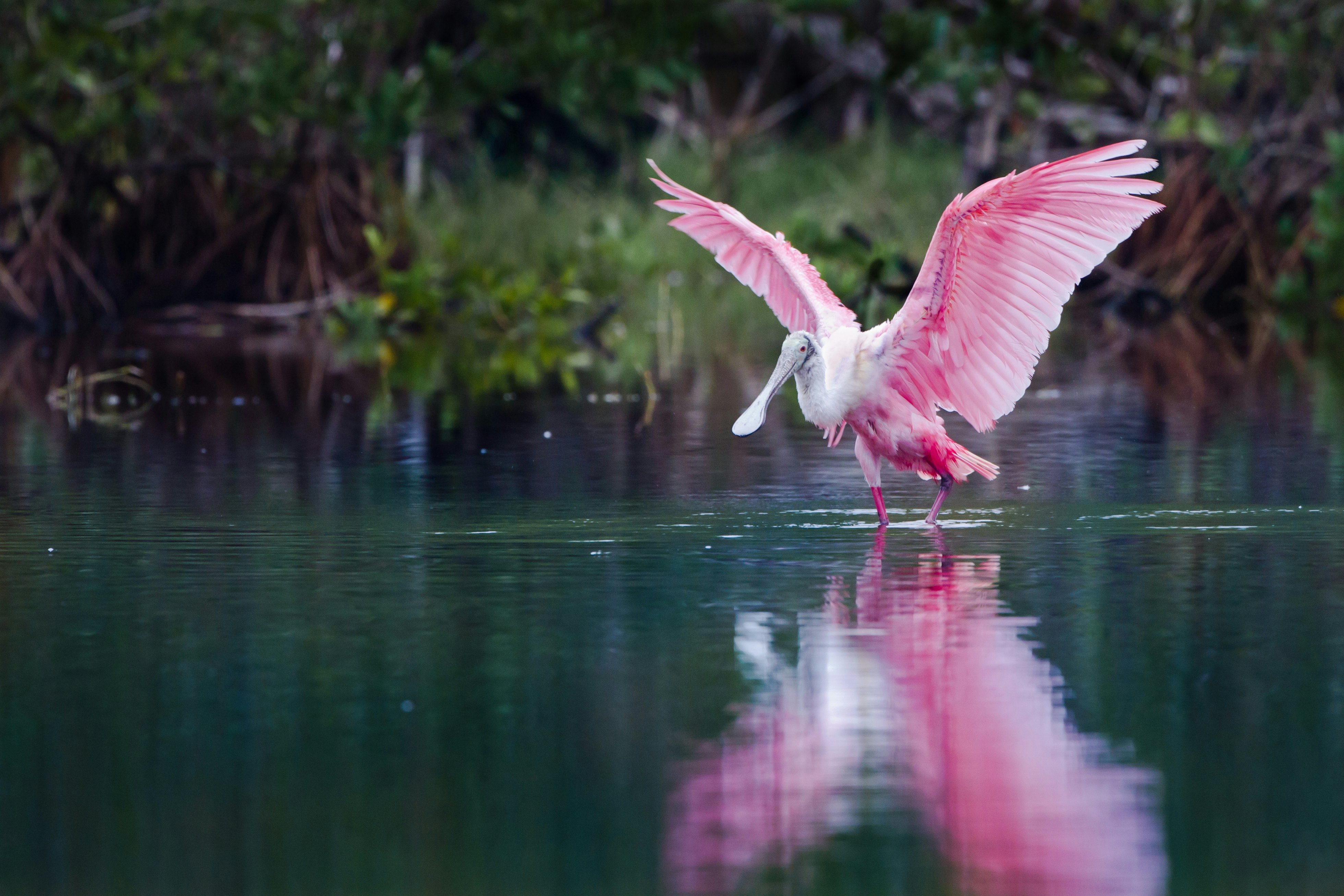
Paddle through the Ten Thousand Islands
Near Everglades City, rent a kayak or hop on a guided trip through this mesmerizing maze of mangrove islets. The calm waters here are great for beginners – but the sheer scope and silence of these tiny islands will leave even seasoned paddlers in awe. Keep your eyes peeled for roseate spoonbills, osprey and dolphins.

Camp under the stars in Flamingo
For the full Everglades experience, spend a night in the park. The Flamingo Campground offers drive-in sites year-round, and even “eco-tents” for glamping from November through April. Prefer a true wilderness experience? Get a backcountry permit and canoe to a remote chickee platform (floating tent site) – one of the coolest ways to spend a night in any US national park.
Take a backcountry boat tour in Flamingo
Hop on a guided boat tour of the Buttonwood Canal and Florida Bay to go deep into the park’s southern end. As you pass by manatees and dolphins, and through tunnels of mangroves, this watery journey will show off the Everglades’ marine side. Bonus: the nearby Guy Bradley Visitor Center recently debuted immersive exhibits that mix tactile, visual and audio storytelling – great for all ages and abilities.

My favorite thing to do in Everglades National Park
Shark Valley really does get me every time. (Call me basic if you must.) Beyond the gators sunning themselves along the nicely paved loop and borderline-eerie observation tower midway, watching everyone else savor the scene is what always does it for me. Whether I’m biking along with family and friends or seeing first-time-in-Florida folks in the tram scoring their first gator sighting, the scene here makes me appreciate my South Florida backyard that much more.
How much money do I need for Everglades National Park?
Compared to many US destinations, the Everglades offers an affordable adventure – especially if you’re camping or visiting just for the day. You can count on spending the most on transport, lodging and activities. You’ll want a car, especially if you’re visiting multiple entrances; activity prices vary by vendor.
Cards are accepted almost everywhere, but it’s wise to bring some cash for small purchases in Everglades City or Homestead.
Everglades entrance fee per vehicle (good for seven days): $35
Bike rental at Shark Valley: from $23
Shark Valley Tram Tour: $29/adult, $15/child
Flamingo Boat Tour: from $40
Glamping tent in Flamingo: from $150/night
Tent campsite at Flamingo or Long Pine Key: from $25/night
Fuel-up sandwich or snack pack in Homestead: $8–12
Be ready for mosquitos – always
Even during the dry season, the Everglades’ unofficial (and unfortunate) mascot is probably the mosquito. Come prepared with strong repellent, long sleeves and light colors. During summer, wear head nets for serious protection. You’ll thank yourself later.
Pack like a Florida pro
Bring layers, even in summer. The sun can be intense, and unexpected rainstorms are part of the adventure. Must-pack items: sunblock, reusable water bottles, bug spray, a waterproof day bag and closed-toed hiking shoes. And don’t forget binoculars, for the bird-watching here is next-level.

Don’t feed the animals
It might be tempting to toss a scrap to that raccoon or gator lurking nearby. But don’t. It’s illegal and dangerous, for both you and the animals. Keep a respectful distance (15 feet minimum for gators and crocs) and secure your snacks. And, please, don’t even think about petting a manatee.
Is the Everglades National Park accessible?
For such a remote destination, yes – surprisingly so. All major visitor centers are wheelchair-accessible, including accessible parking and restrooms. Wheelchairs are available to borrow at most centers. Trails like Anhinga, Pa-hay-okee and Mahogany Hammock are all designed with accessibility in mind, and Shark Valley’s tram and Flamingo’s boat tours offer assistive listening and mobility aids (with advance notice). Visitors with sight or hearing issues will find tactile maps, large-print signage, audio descriptions and closed captioning available across several park facilities.
Can I stay inside Everglades National Park?
Yes – and you should. The Flamingo Lodge – recently reimagined – offers suites and houseboats, while the nearby campground has traditional and glamping sites. Long Pine Key Campground is closer to Royal Palm and open seasonally. If you're camping in the backcountry, permits are required, and you’ll need to check weather and tide conditions before launching your canoe.








